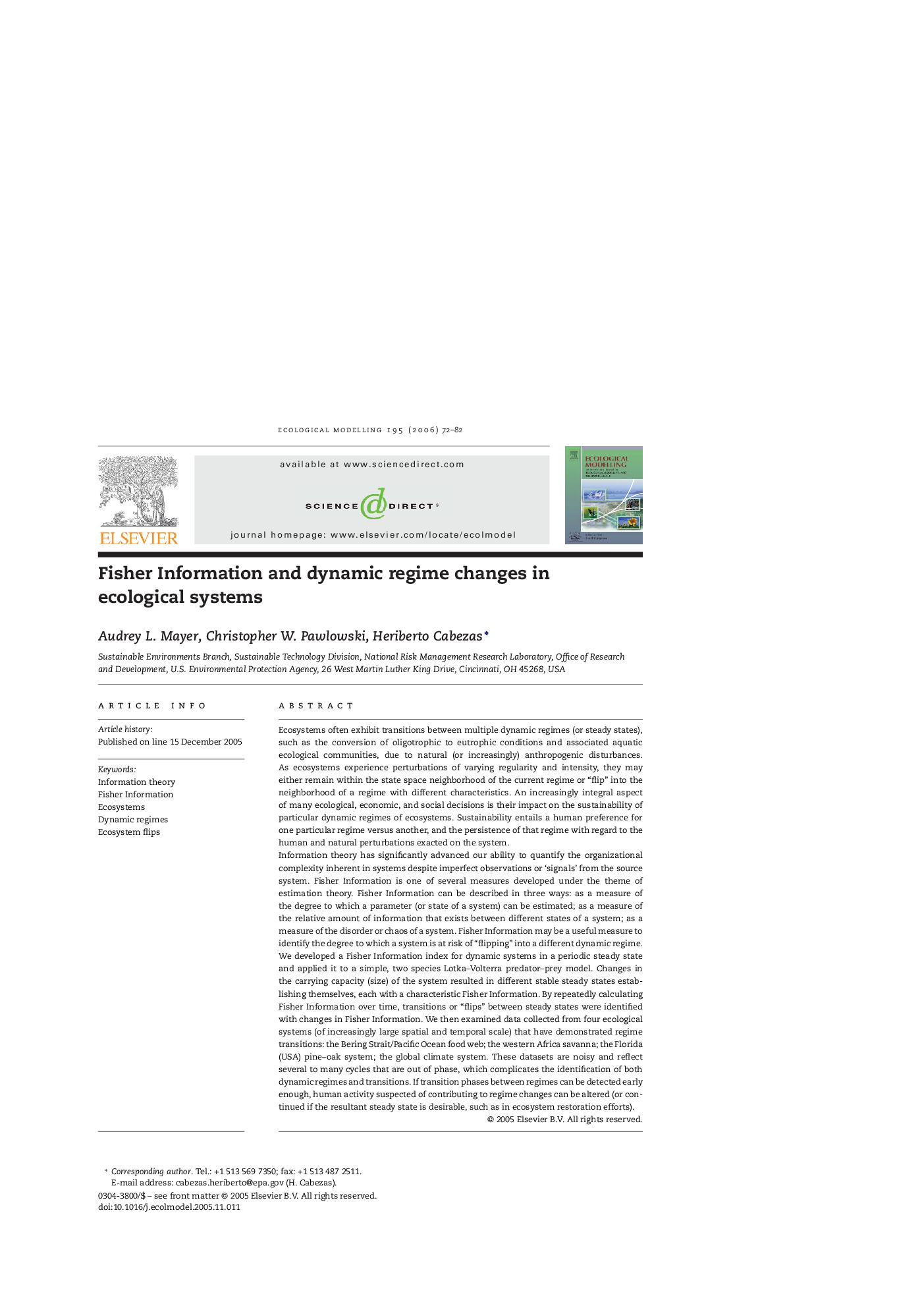| Article ID | Journal | Published Year | Pages | File Type |
|---|---|---|---|---|
| 4379092 | Ecological Modelling | 2006 | 11 Pages |
Abstract
We developed a Fisher Information index for dynamic systems in a periodic steady state and applied it to a simple, two species Lotka-Volterra predator-prey model. Changes in the carrying capacity (size) of the system resulted in different stable steady states establishing themselves, each with a characteristic Fisher Information. By repeatedly calculating Fisher Information over time, transitions or “flips” between steady states were identified with changes in Fisher Information. We then examined data collected from four ecological systems (of increasingly large spatial and temporal scale) that have demonstrated regime transitions: the Bering Strait/Pacific Ocean food web; the western Africa savanna; the Florida (USA) pine-oak system; the global climate system. These datasets are noisy and reflect several to many cycles that are out of phase, which complicates the identification of both dynamic regimes and transitions. If transition phases between regimes can be detected early enough, human activity suspected of contributing to regime changes can be altered (or continued if the resultant steady state is desirable, such as in ecosystem restoration efforts).
Related Topics
Life Sciences
Agricultural and Biological Sciences
Ecology, Evolution, Behavior and Systematics
Authors
Audrey L. Mayer, Christopher W. Pawlowski, Heriberto Cabezas,
